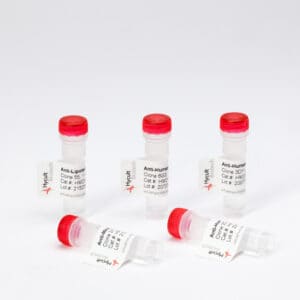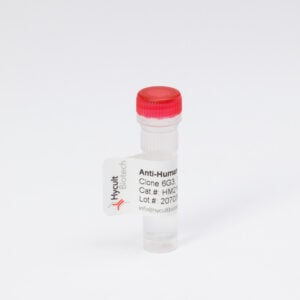
SIGN-R1, Mouse, mAb ER-TR9
€414.00
The monoclonal antibody ER-TR9 recognizes murine SIGN-related 1 (SIGN-R1). Mouse SIGN-R1,- a homolog of human DC-SIGN, is a 37 kDa type II transmembrane protein containing a single, C-terminal C-type lectin domain. SIGN-R1 is a specific marker for the identification of macrophage subpopulations present in the marginal zone of spleen (the so-called marginal zone macrophages (MZM)), in the lymph node medulla, and in the peritoneal cavity of some mouse strains. ER-TR9 does not react with macrophages in other regions of the spleen, such as CD169+ marginal metallophils and F4/80+ red pulp macrophages. In the spleen, the MZM function in trapping and clearance of blood-borne microbial antigens. SIGN-R1 mediates the uptake of encapsulated microbes , particularly through the recognition of microbial polysaccharides. Uptake of FITC-labeled dextran by macrophages can be blocked both in vivo and in vitro by the monoclonal antibody ER-TR9. Therefore, the monoclonal antibody ER-TR9 can be used to study the uptake of polysaccharides by macrophages.




Related products
-
View product €133.00 – €368.00
-
View product €133.00 – €1,245.00
-
View product €133.00 – €456.00
-
View product €133.00 – €8,873.00
-
View product €133.00 – €456.00
-
View product €133.00 – €510.00
-
View product €133.00 – €414.00
-
View product €133.00 – €276.00



